Buckinghamshire Windmill Tour
Windmill Hunting in Buckinghamshire
It’s strange how our days out come about. We were looking for a walk on what was predicted to be a nice warm sunny Bank Holiday Saturday and came up with a charming walk in the Chiltern Hills in Buckinghamshire. The route visited three small villages and went past Cobstone Windmill, which was used as a location in the Chitty Chitty Bang Bang film. It sounded like fun, but now we had windmills in our head. In short order, we ended up on Wikipedia and found that the county of Buckinghamshire boasts nine remaining windmills! Could we find them all? The challenge was set, and a route mapped out for our Buckinghamshire Windmill Tour!
Although Buckinghamshire neighbours our home county of Northamptonshire, for some reason it’s not a direction we usually go to explore. We’ve visited Stowe Gardens, Ascott House and Gardens, Buckingham, and done many walks around Milton Keynes, but have never really given the rest of the county much thought. So, we set off the next morning in lovely sunshine for an adventure…
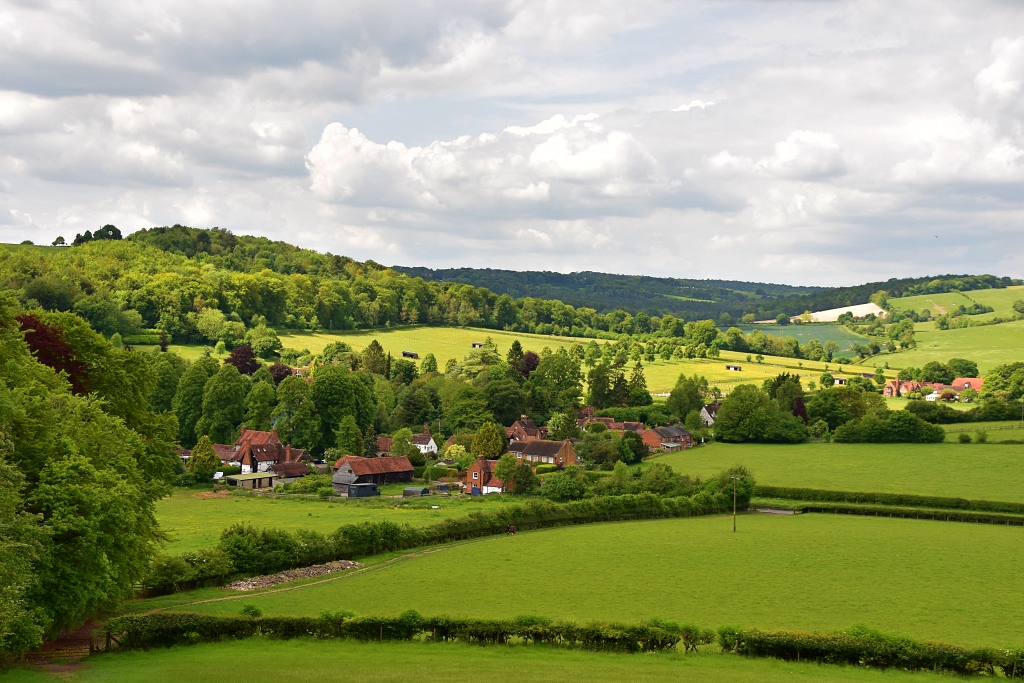 View over Fingest Village in the Chiltern Hills © essentially-england.com
View over Fingest Village in the Chiltern Hills © essentially-england.comBuckinghamshire Windmill Tour Map
The mapped route is 103 miles long and uses all types of roads, from the M40 motorway to some very pretty, but tight single-track roads. On the quieter roads, the scenery was stunning and passed through some wonderful small villages and towns. I also believe the route took in a few other counties as it twisted its way between the windmills. Although the route starts from Milton Keynes, because of where we live, we chose to join the route at Quainton (windmill C) and came through Milton Keynes on our way home.
The order of windmills visited is:
A: Bradwell Windmill
Bradwell Windmill was built by Samuel Holman in 1805 using local limestone. It milled barley and wheat until 1876 when it closed. The mill was left unused for around 100 years until it was partially restored in the 1970’s. Further restoration in 2014 brought the windmill back to life and it was again producing flour. Sadly, though, this Grade II listed mill is now closed for maintenance.
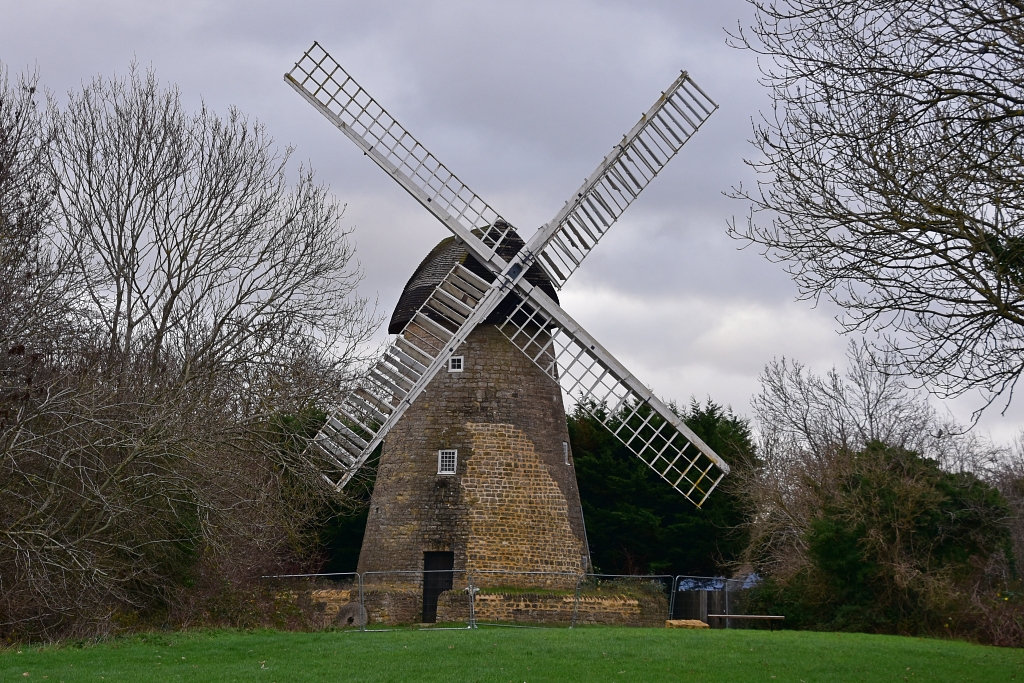 Bradwell Windmill in Milton Keynes © essentially-england.com
Bradwell Windmill in Milton Keynes © essentially-england.comB: Caldecotte Windmill
Caldecotte Windmill was built in 1992 as part of a hotel and pub complex. It was built by professional millwrights using materials from Holland. Since construction the sails have been removed.
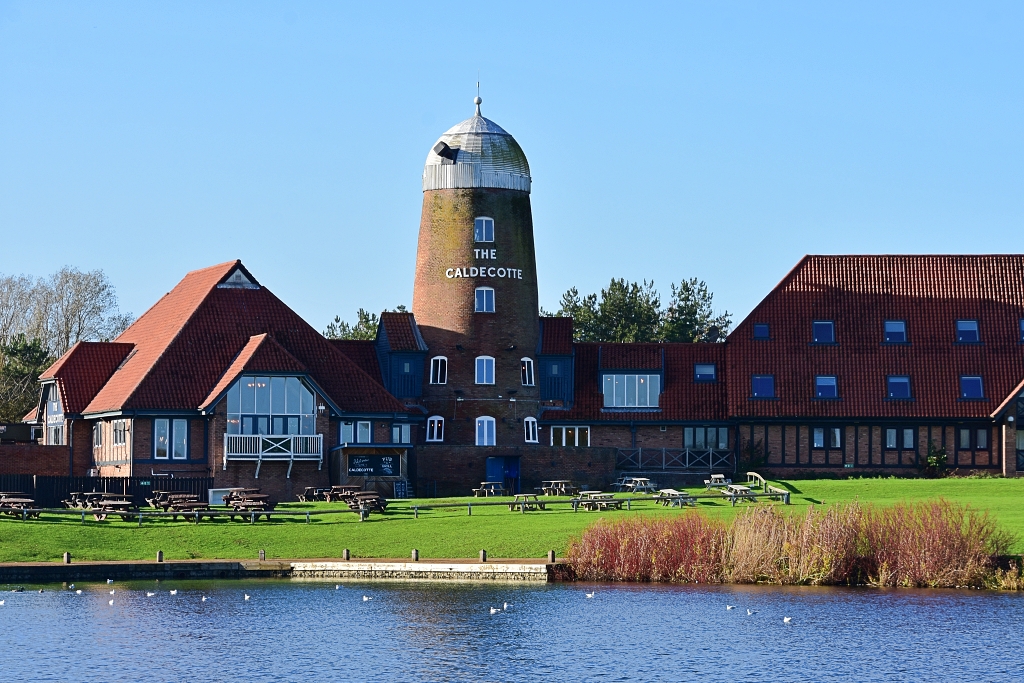 Caldecotte Windmill in Milton Keynes © essentially-england.com
Caldecotte Windmill in Milton Keynes © essentially-england.comC: Quainton Windmill
Standing at 65 feet tall, brick-built Quainton windmill is the tallest in Buckinghamshire. Construction started in 1830 and took two years to complete. The bricks were made from clay that was dug from close by the windmill and fired in a kiln on site. Due to the hills around Quainton sheltering the mill from northern winds it was soon converted to steam power, with coal having to be brought in from Winslow. It is thought that the mill ceased operation around 1900 and lay unused for around 70 years. The mill has now been fully restored and can be seen working under wind power most Sundays.
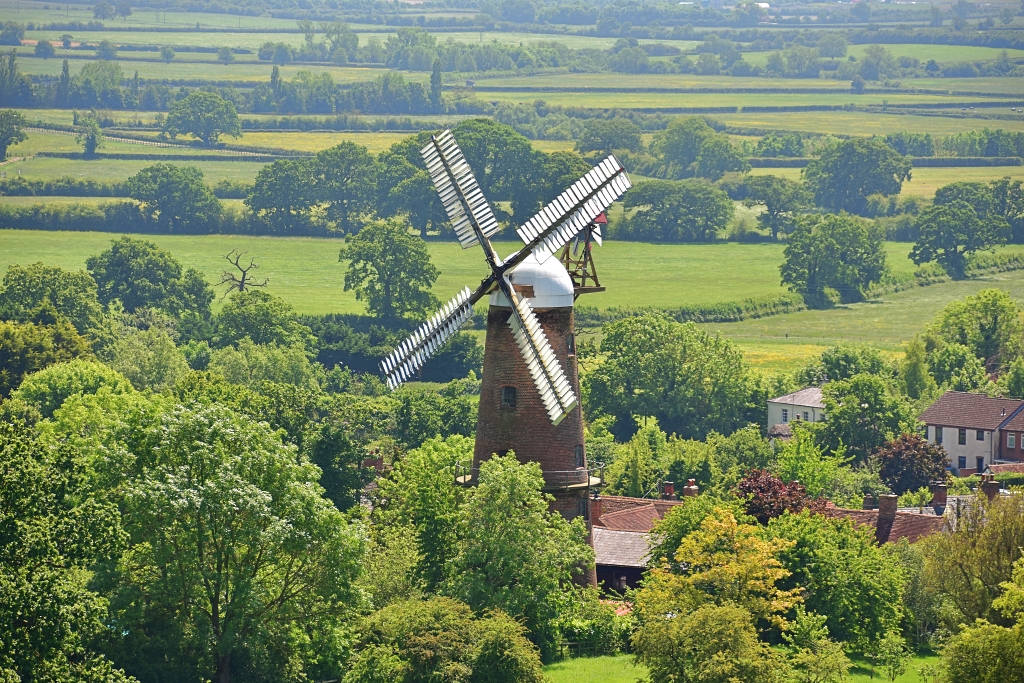 Quainton Windmill © essentially-england.com
Quainton Windmill © essentially-england.comD: Brill Windmill
Brill Windmill is found on undulating common land at the top of a lovely hill in the Buckinghamshire countryside. As the mill is a post mill, it means that the wooden body of the mill would have had to be turned around by the miller to find suitable wind. This is the earliest type of windmill and dates from around 1680. During the warmer months, the windmill is open on Sundays, and we can confirm there are some lovely views from the top of the hill.
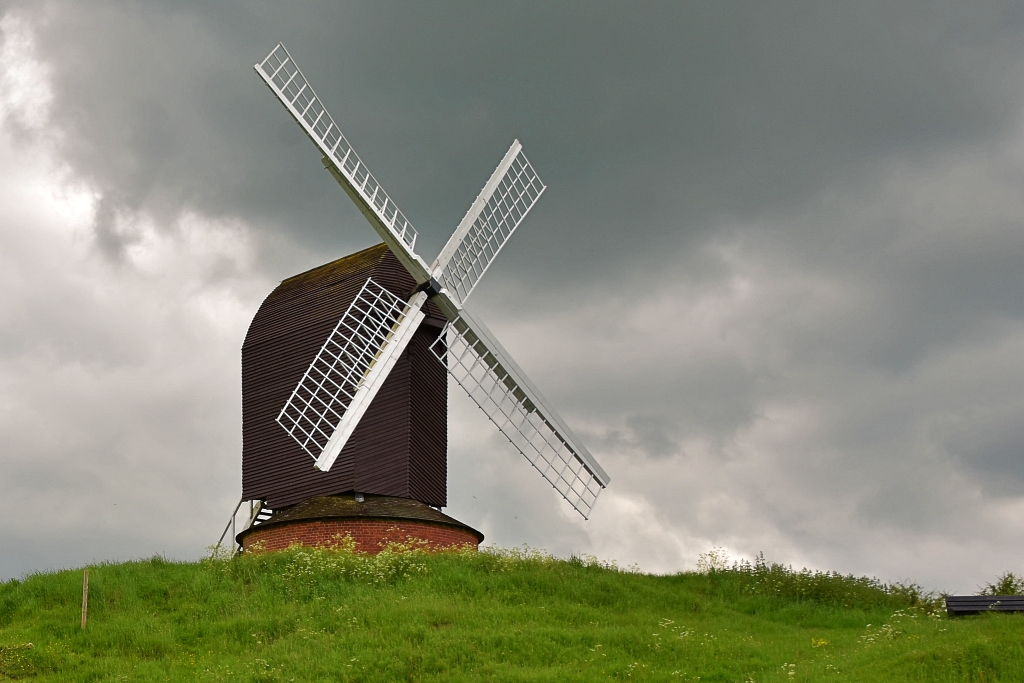 Brill Windmill © essentially-england.com
Brill Windmill © essentially-england.comE: Lacey Green Windmill
High up on the Chilterns escarpment is Lacey Green Windmill which is the oldest surviving Smock Mill in England. It gets this name from the shape of its tower looking like the smocks farmers used to wear when the mill was built. Inside the windmill, its unique wooden machinery has been dated from around 1650. The mill stopped operating in 1915 and was left to decay. During the 1970’s and 80’s the mill was restored and is open to the public on Sundays and Bank Holidays between May and September. Sadly, the sails were removed in November 2023 due to their poor condition, but plans are in place for them to be renovated and replaced.
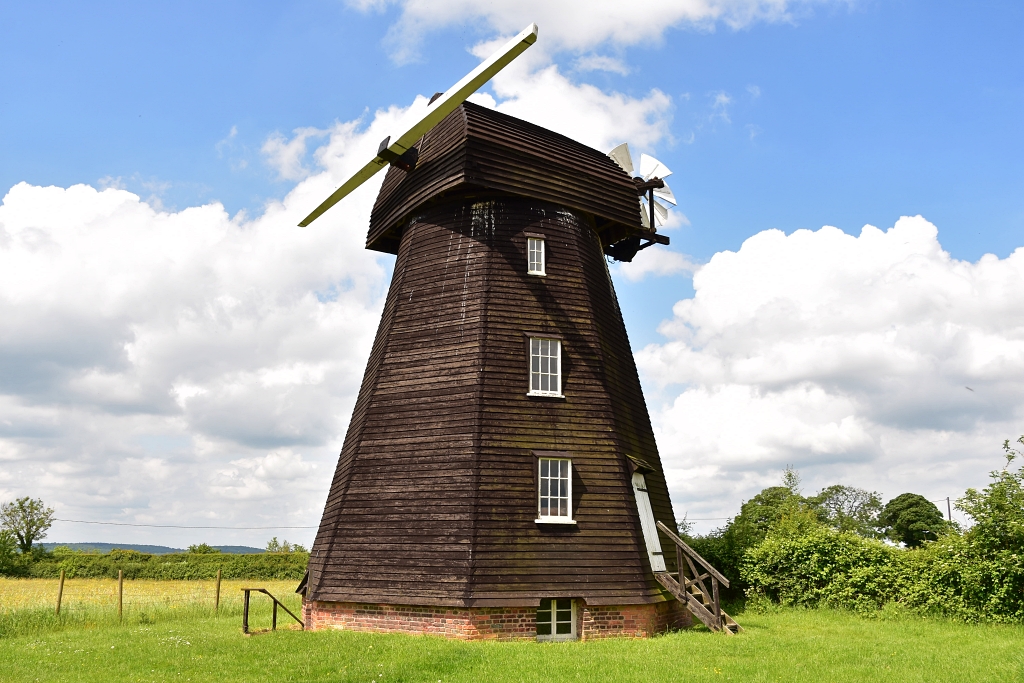 Lacey Green Windmill © essentially-england.com
Lacey Green Windmill © essentially-england.comF: Cobstone Windmill
Cobstone Windmill sits high up on a hill overlooking the charming village of Turville, a location for the filming of the Vicar of Dibley. It’s a Smock Mill that was built around 1815 to replace a sixteenth century mill, and was used for about 100 years. Its main claim to fame is its starring role as the Potts' family home in the Chitty Chitty Bang Bang film from the 1960’s. Since the film was made, the mill has been part of a private home whose owners have included actress Hayley Mills and Sir David Brown of Aston Martin fame.
The best views of the windmill are from the village of Turville which we passed through on our Chitty Chitty Bang Bang walk.
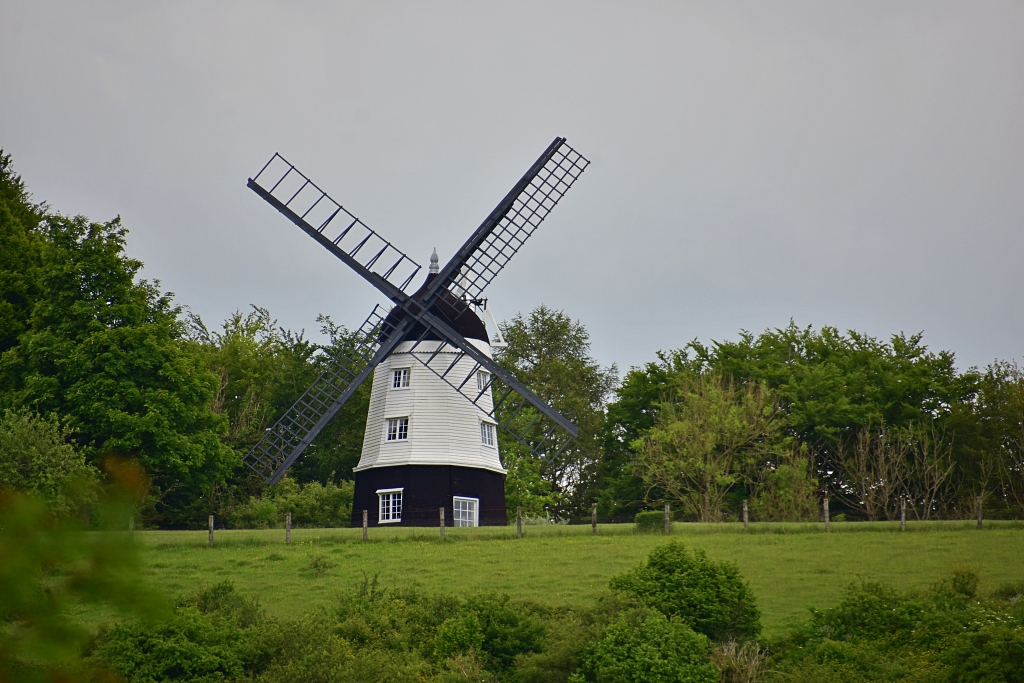 Cobstone Windmill from Chitty Chitty Bang Bang © essentially-england.com
Cobstone Windmill from Chitty Chitty Bang Bang © essentially-england.comG: Coleshill Windmill
Coleshill Windmill is a Grade II listed brick-built tower mill. It was constructed in 1856 for the Grove family of Penn and can sometimes be called Grove Mill. It was operational until the early 1900’s. The windmill is now part of a private home.
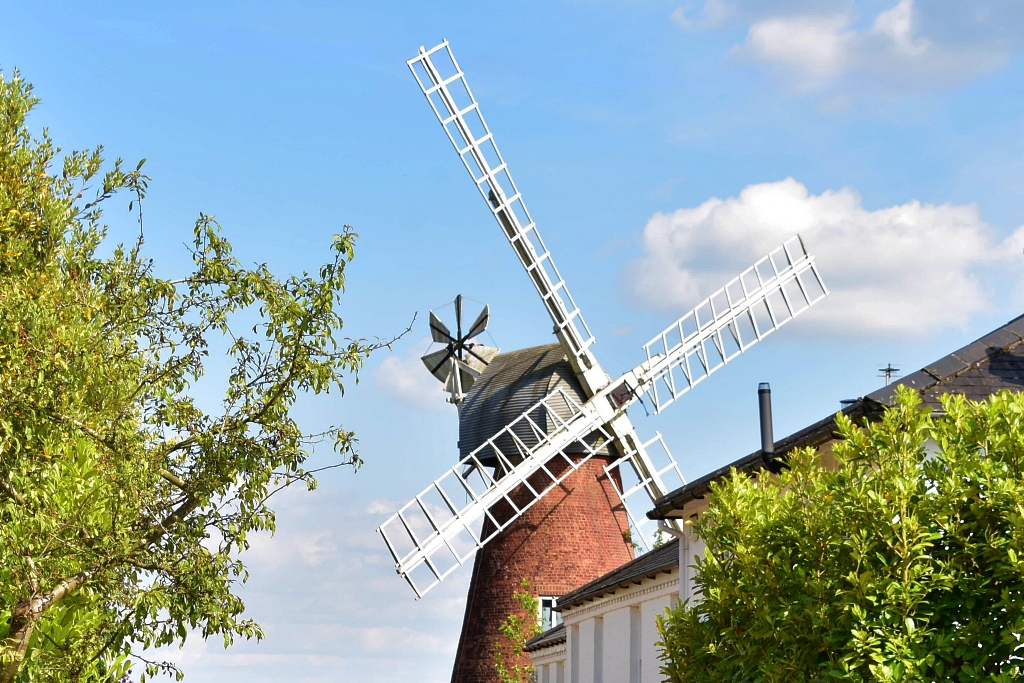 Coleshill Windmill © essentially-england.com
Coleshill Windmill © essentially-england.comH: Cholesbury Windmill
Cholesbury Windmill is thought to be the last tower mill built in England. In 1883, it replaced an unprofitable steam powered smock mill and was in use until 1912. This Grade II listed structure has been a private residential property since 1913.
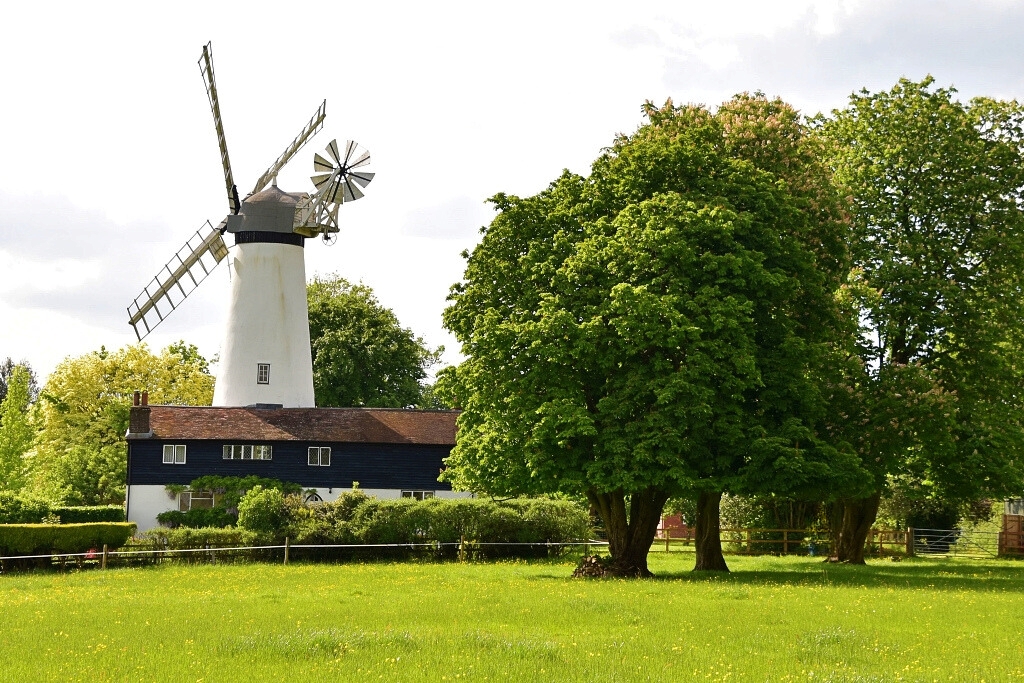 Cholesbury Windmill © essentially-england.com
Cholesbury Windmill © essentially-england.comI: Pitstone Windmill
Pitstone Windmill can be found stuck in the middle of a field just below the hills of the Ridgeway in a glorious Buckinghamshire landscape. It is possibly the oldest post mill in England with some of the interior woodwork being marked 1627. The mill is owned by the National Trust and has been fully restored.
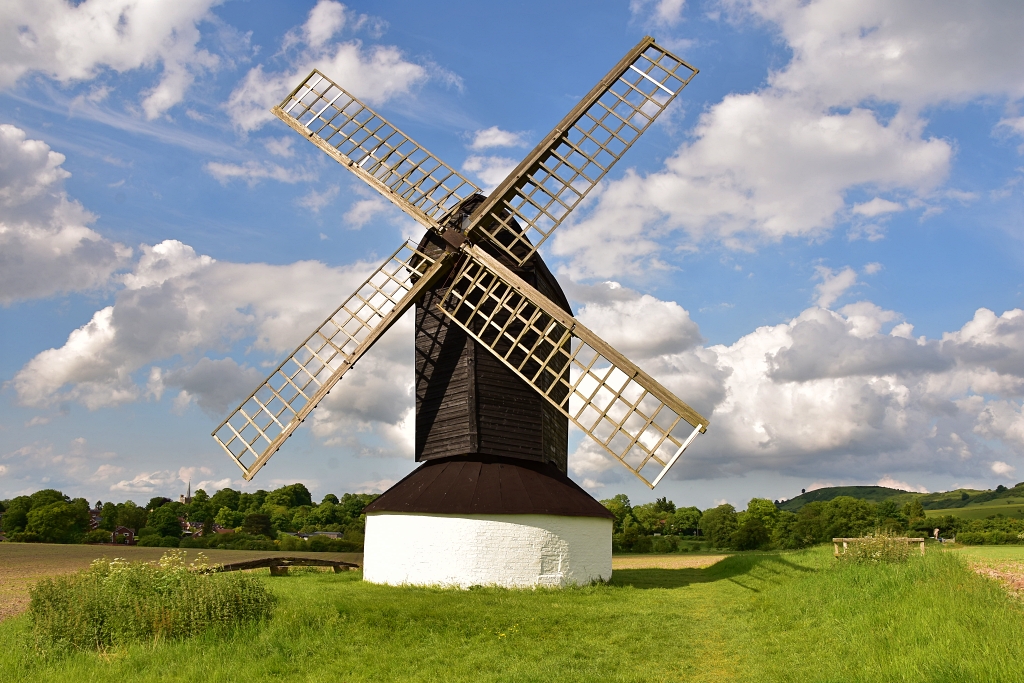 Pitstone Windmill © essentially-england.com
Pitstone Windmill © essentially-england.comIf you need to find a hotel, then try one of these search platforms...
We had a wonderful day out chasing windmills on our Buckinghamshire Windmill Tour, but it wasn’t just about the windmills as the route took us to many pretty places that were unknown to us. Our walk was just brilliant, the Chilterns made a lovely backdrop and I’m sure were going to be exploring more of this lovely area on foot. And, if this tour has inspired you to plan a day out in Buckinghamshire, it doesn’t have to be windmills you’re chasing. Why not explore castles, palaces, bridges, water towers, or venture further afield and check out a few lighthouses!
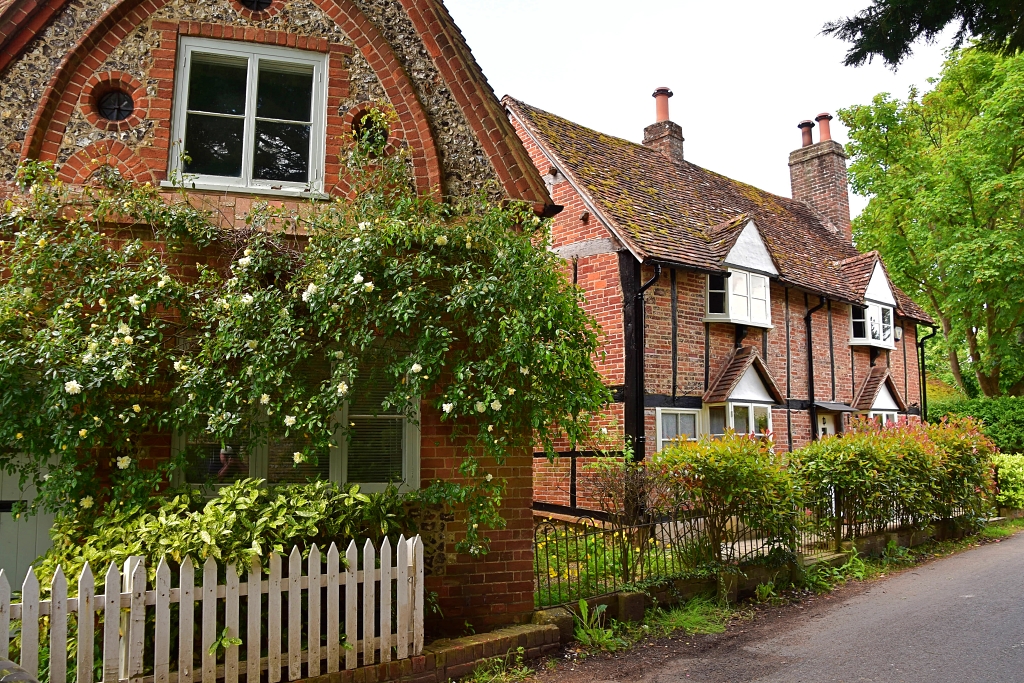 Walking Through Skirmett in the Chiltern Hills © essentially-england.com
Walking Through Skirmett in the Chiltern Hills © essentially-england.com

